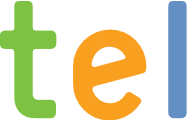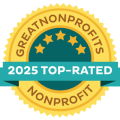This story was originally featured on bcg.perspectives by The Boston Consulting Group as part of a BCG alumni feature.
Karen von Bismarck was volunteering in a hospital in Haiti in the early 2000s when she had an epiphany. Seeing the toll that extreme poverty takes on individuals, communities, and the environment, she was impressed by the resourcefulness of people forced to live on less than one dollar a day.
“I was amazed by the inventiveness of the Haitian people, the things they could do with some twists of wire or a few blocks of concrete, the way they could fix and build things,” said Karen [BCG Munich, 1977 – 83].
It struck her that similar models of resourcefulness must be mushrooming in all areas of the globe, particularly in the developing world (as solutions are most often created where problems exist.)
“I thought this must mean there are available, say, safe cook stoves so that people aren’t burning the last tree in the village, or water purification devices so that people aren’t literally drinking themselves to death with typhoid and cholera.”
Back in the US she met up with friend and fellow MIT alum, Gary Bergstrom. “We drank a lot of coffee and chewed over a lot of ideas about development economics. We discussed the shortcomings of ‘charity’ and the need to provide people with good information to help them make informed decisions.”
Both also noted that, while technology-based solutions were effective at combating many of the problems of poverty, too many NGOs, local entrepreneurs, and last-mile communities lacked the time and expertise required to find, assess, and acquire those solutions.
Out of those conversations, the nonprofit Technology Exchange Lab (TEL) was born. TEL is an information nexus where a global network of innovators, social entrepreneurs, NGOs, and developing small-to-medium enterprises could propose, discover, and source practical technology solutions to problems of poverty.
Going beyond a catalogue of products and methods, TEL leverages the creativity of innovators, partners, and TEL’s own researchers and volunteers. The result is an up-to-date, curated, and globally accessible website. It includes a database for proposing, discovering, and sourcing practical technology solutions for the developing world.
TEL provides two main services via an online platform: a database and a Project Accelerator.
The database offers globally-accessible information on tech-based solutions across six key areas: water and sanitation; health and medical care; energy and clean cooking; agriculture and tools; education and connectivity; and housing and transport.
The Project Accelerator, a needs-based service, lets social entrepreneurs and NGOs leverage technology to maximize the impact of development projects and social ventures.
Karen describes TEL’s interactive website as being “entertainingly easy to use,” and a place where people can search and post innovations and inventions, and find direct access to suppliers. While “anybody anywhere” can create an identity and upload a solution, that solution must meet four criteria for inclusion in the database: it must be locally implemented or point-of-use; cost-effective in terms of what it provides and in comparison to market alternatives; environmentally sustainable; and beneficial to the wellbeing of the end-user.
It didn’t take long before innovators — seeing an opportunity to get their solutions into the hands of endusers — were approaching TEL to be included in the database.
“We work to create an atmosphere of trust and mutual understanding between suppliers and endusers,” said Karen. “This is critical when you’re working with individuals and grassroots organizations in the developing world where people are likely to be unsophisticated in terms of first-world purchasing and marketing structures. We lend a sympathetic ear, watch to gauge what’s going on, and work to reduce risk for all parties.”
Seven years in (TEL was founded in 2009), there have been many inspiring success stories. Asked to pick a favorite, Karen responds, “worms.”
A social entrepreneur in Bangalore developed a kit to teach farmers how a return to vermiculture (the cultivation of worms for use in composting) can provide a way to give them fertile soil and independence from the big fertilizer firms. (Across India, farmers have become dependent on chemical fertilizers — which have longterm detrimental effects on their soil — and on the companies that produce and set the prices for those fertilizers.) To make vermiculture happen on a large scale, the entrepreneur started training farmers — mostly women — to use a simple, laptop-based software, replete with visuals and diagrams demonstrating proper use of the kit.
And TEL’s part in all of this?
“Well, we certainly did not supply the worms,” Karen laughed. “We did, however, consult on what the best laptop platform would be. The entrepreneur had been looking originally at a sub-optimal product that would have been more expensive and less reliable than one eventually recommended to them from our database.”
Another favorite project, Light up Karnataka, is an initiative of a grassroots organization in South India to provide off-grid homes with point-of-use solar lanterns. By outfitting — through a micro-consignment model — local female entrepreneurs with inventories of solar lamps, the program creates employment opportunities and provides thousands of families a safe, sustainable, and cost-effective alternative to kerosene lamps.
In this case, TEL helped the organization identify and procure solar lanterns from providers and apply for grants to fund the purchase of the lights.
This latter example helps highlight an important distinction. “This should not be mistaken for a microfinance model,” said Karen. “It is a micro-consignment model. We provide the product rather than money to buy the product.”
TEL has grown significantly since its founding, and the website is evidence of the thousands of technology solutions it has made available to ease the lot of the world’s poor. As for so many NGOs, and despite its demonstrable impact, its big challenge remains financial sustainability.
As Karen says, “It’s the only independent and curated database of its kind. But we are basically 100% overhead. As such, it’s very difficult to raise money in the absence of any type of costly, tug-at-your-heart-strings poster campaign.” Visibility, or lack thereof, is an ongoing problem — how can TEL get “seen” by both the entrepreneurial and last-mile communities? And by the potential funders?
A recently-launched mobile app should provide at least part of the answer. TEL Off-Grid (designed by a volunteer team of computer science students who met at the International Development Hackathon) allows people in remote communities to access TEL’s database via mobile phone. Users who do not otherwise have regular Internet can now access 600-plus pages, including illustrations, drill-downs, and links, from the database. They also now have a way to email a solutions provider directly to initiate a conversation straight from their phones.
“We are unique in how we serve our users. Larger organizations such as the UN, the Red Cross, and others, tend to concentrate on grander projects; they are unable to focus on the countless small, individual projects popping up in all corners of the globe. There are gaps. TEL fills those gaps by giving those projects the opportunity to bootstrap off of its website. As it connects with evermore last-mile, grassroots organizations, TEL is having a positive, life-changing impact on the lives of a great many people.”
This story was originally featured on bcg.perspectives by The Boston Consulting Group as part of a BCG alumni feature.





